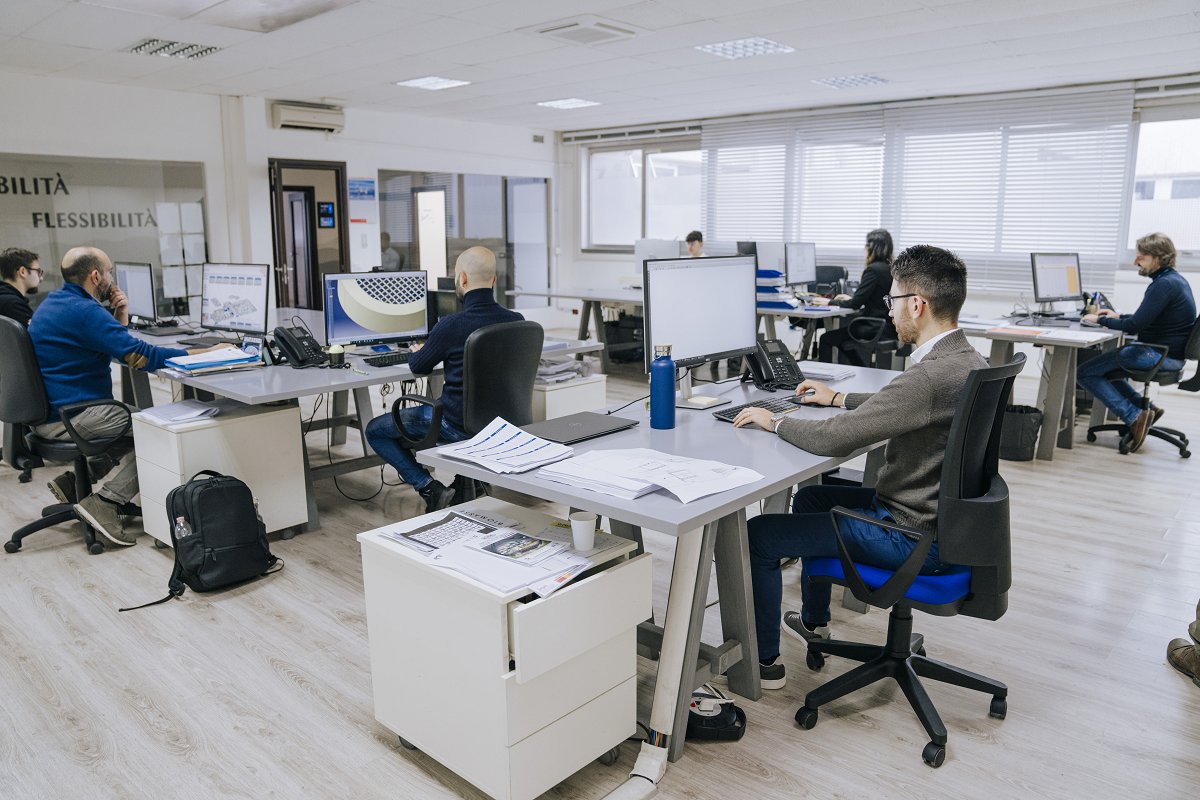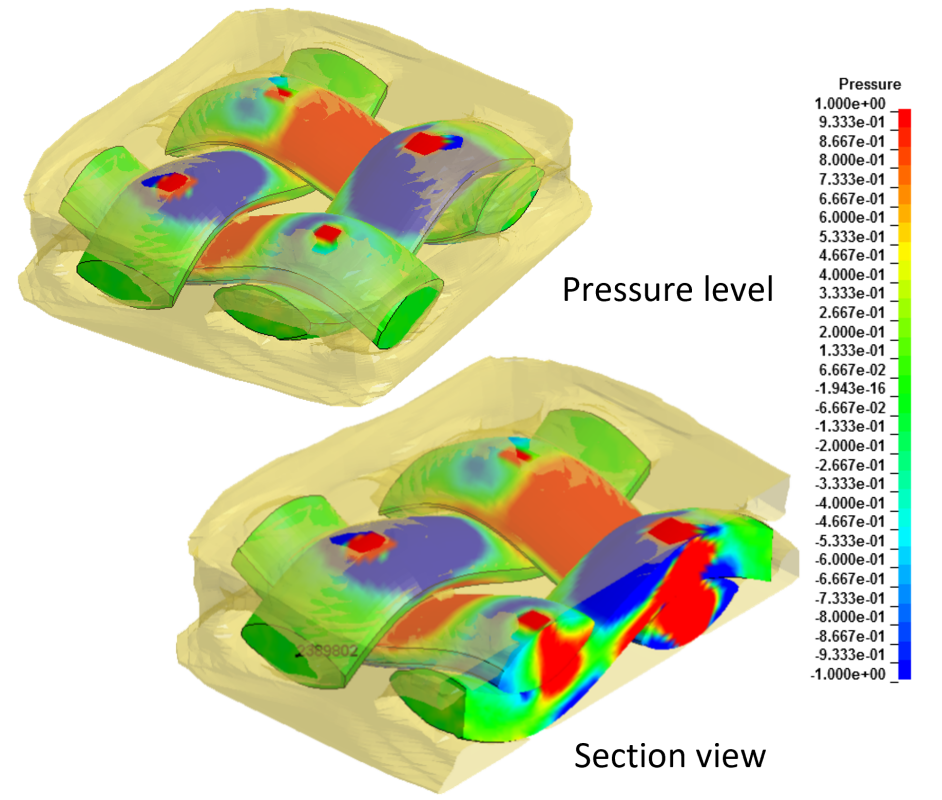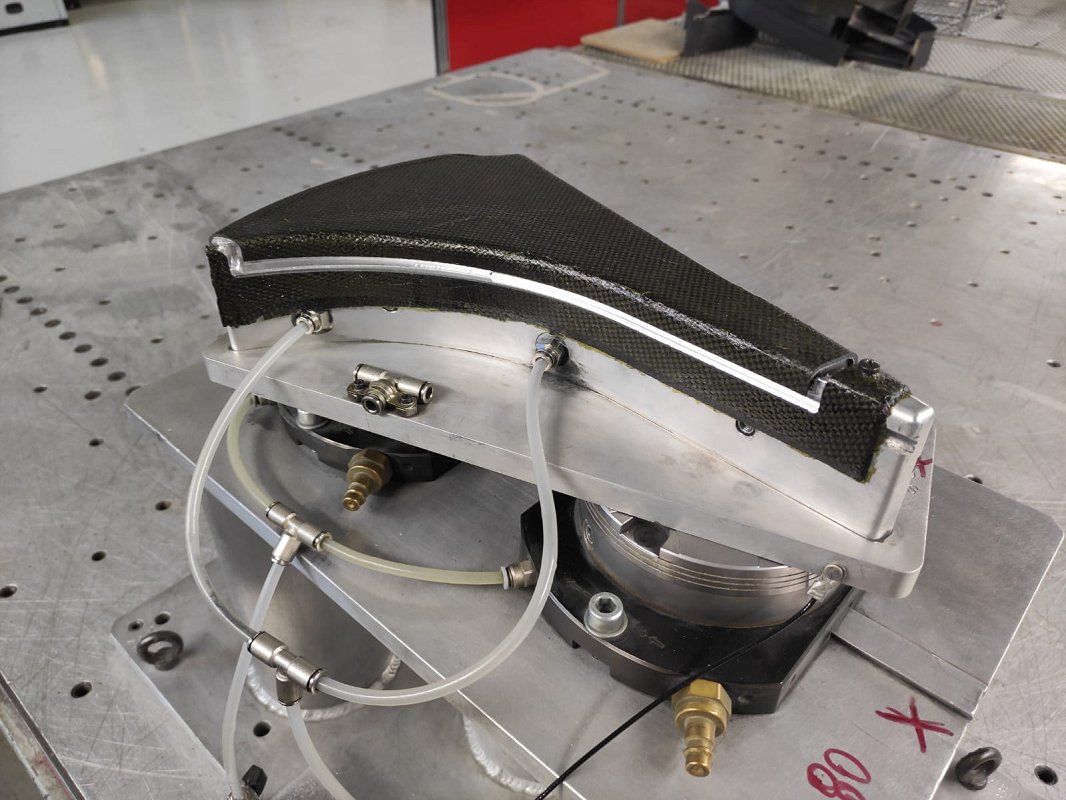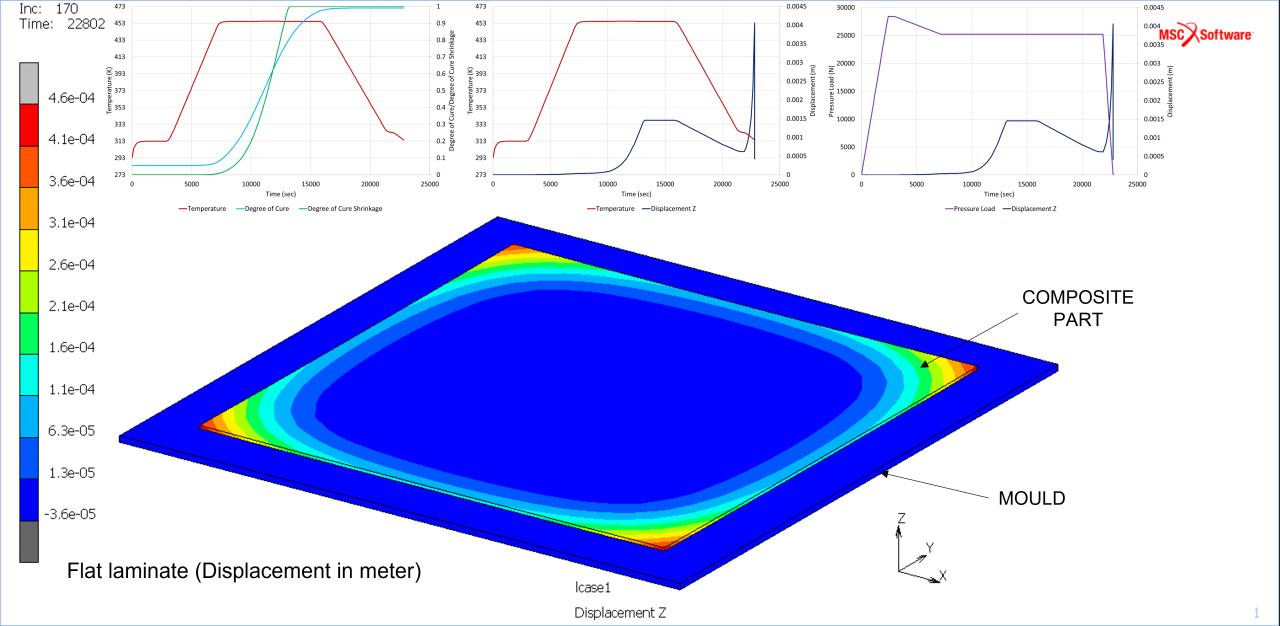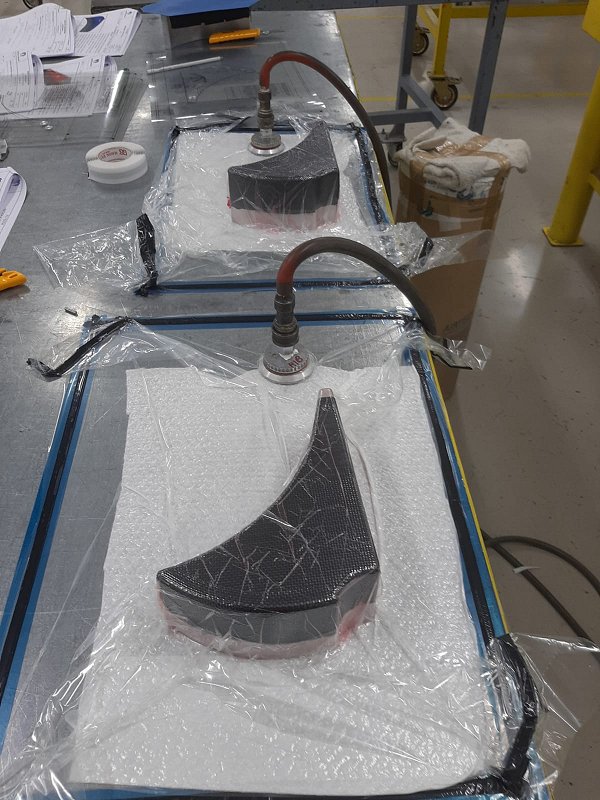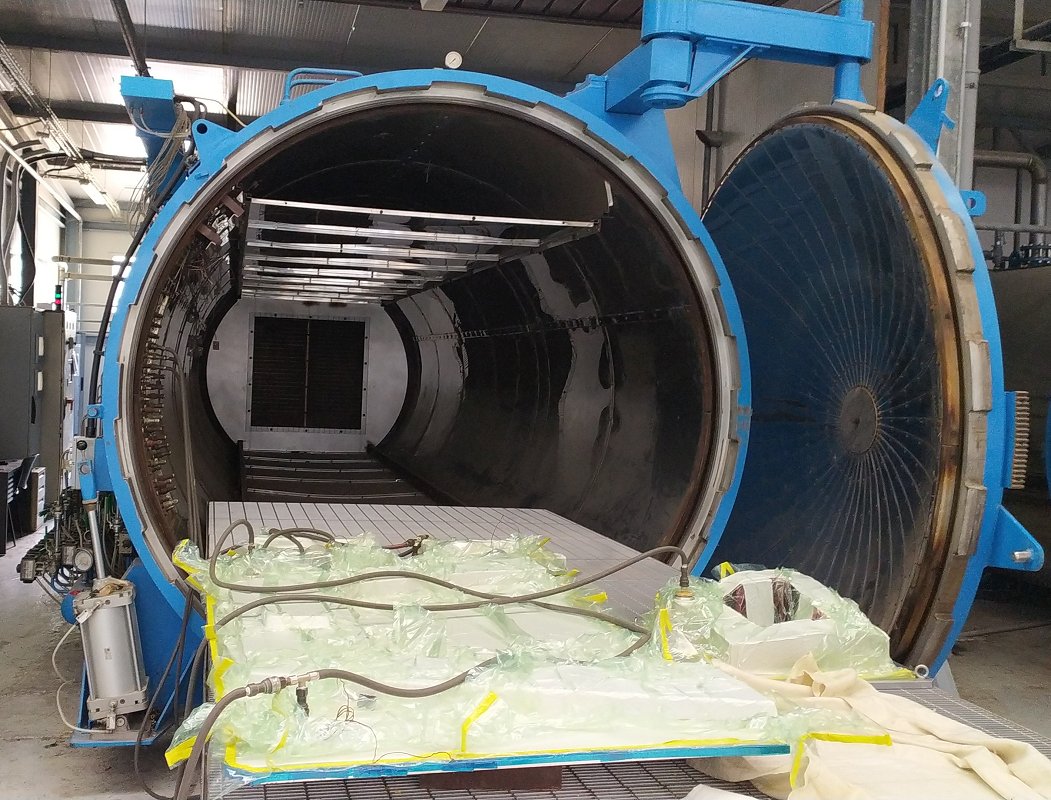Multiphysics and Multiscale Modelling of Aeronautical Components
The autoclave process is the main fabrication method for composites used in the aerospace field. This process involves mechanical and chemical phenomena and a lot of variables affect the final result. Therefore, an expensive trial-and-error approach is typically necessary to set a cure cycle for complex shape components in order to reach the requirements and minimize the risk of defects. The objective of this experiment was to optimize, by advanced simulations, the autoclave process maximizing the component quality and minimizing time and costs.
SECTOR: Manufacturing
TECHNOLOGY USED: HPC, FEM Simulations
COUNTRY: Italy
The challenge
The autoclave moulding process – where composite layers are placed on a mould based on a lamination sequence and cured inside an autoclave using a vacuum, heat, and pressure – is the main fabrication method for composites used in the aerospace field. This process involves both mechanical and chemical phenomena, and a correspondingly high number of variables affect the final result.
Working with innovative materials and geometries leads to an increased number of defects and voids in the finished components which then are rejected. During the curing process, the mechanical stresses in the various materials rise, and this can lead to undesirable consequences. For example, during the cooling phase the different thermal expansion coefficients of the fibre, matrix, and mould materials generate high residual stresses which can lead to defects in the finished composite parts. Given the expense of the autoclave process, it is important to minimize defects in the finished components.
Currently, an expensive trial-and-error approach is used to find the optimal process parameters to produce complex-shaped components while minimizing the risk of voids or geometric distortions. This leads to long development times and high costs.
Manta Group’s aim is a more effective manufacturing process for its products finding the optimal process parameters by multi-scale and multi-physics numerical simulations. This significantly reduces the necessary development times and costs as compared to the currently used trial-and-error approach.
The solution
To optimize the autoclave process parameters (e.g. the lamination sequence, the maximum temperature, the soaking times, the times of heating, the maximum pressure), the different phenomena during the curing process need to be simulated to predict the parameters’ effects on the quality of the components to be manufactured. To this end, two separate multi-physics and multi-scale numerical models were set up, employing HPC resources. In detail, these are (a) a thermo-mechanical model (on the macro scale) to predict the dimensional variations of the laminates due to the residual stresses generated during the autoclave process, and (b) a fluid-structure model (on the micro-scale) to simulate the resin flow during the pressure application. Both numerical models were validated by comparison with results of experimental tests done by Manta Group. To reduce the computing times, the scalability of the simulations and the use of HPC resources were improved substantially with the help of CINECA.
Using the material properties, the lamination sequence, the geometry of the parts, and the specification of the autoclave curing cycle as input parameters, the HPC simulations set up in the first step proved to be able to provide the required information about the resulting part distortion and possible defects in the finished part in a very short amount of time. This HPC-backed simulation workflow now enables Manta Group to easily find the optimal parameters for the manufacturing process in a few minutes, thereby cutting down development times and minimizing the number of physical tests significantly.
Business impact
Thanks to the MULCOM experiment, MANTA now uses HPC-based simulations to produce high-quality composite components, reducing development time and costs while increasing its competitiveness. Since autoclave moulding will remain the main manufacturing technology of aerospace structures at least for the next 10 years, this significantly strengthens Manta Group’s business position.
In addition, the improved autoclave process know-how can enable MANTA to profitably enter many other sectors besides aerospace (e.g. luxury boats, automotive, sport). All this helps to attract new customers by offering a full service, from design to the production of the component. The expected business impact has been quantified at €1million three years after the end of MULCOM (September 30th, 2022).
Benefits
- MANTA expects to reduce design costs by 50% (about €100.000 saving per year), material waste by 70% (about €60.000 saving per year), and raw materials usage by 15% (about €150.000 saving per year).
- CETMA expects the success story will lead to new R&D projects and consultancy services with an increase in its turnover of about €50.000 per year.
- CINECA aims to become MANTA’s provider of HPC resources estimating its related increased turnover to €20.000 per year and to exploit the success story to attract new customers with an additional increase of turnover of the same order.
Organisations involved:
End User: MANTA GROUP s.r.l.
Research Centre, Domain Expert: Centro di Ricerche Europeo di Tecnologie, Design e Materiali (CETMA)
HPC Provider: CINECA
Partner CINECA is part of the NCC Italy.


